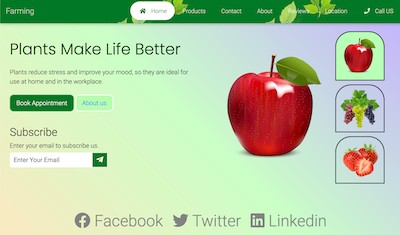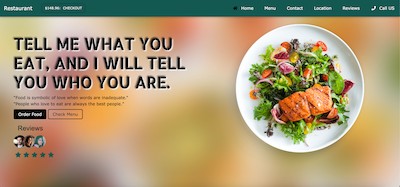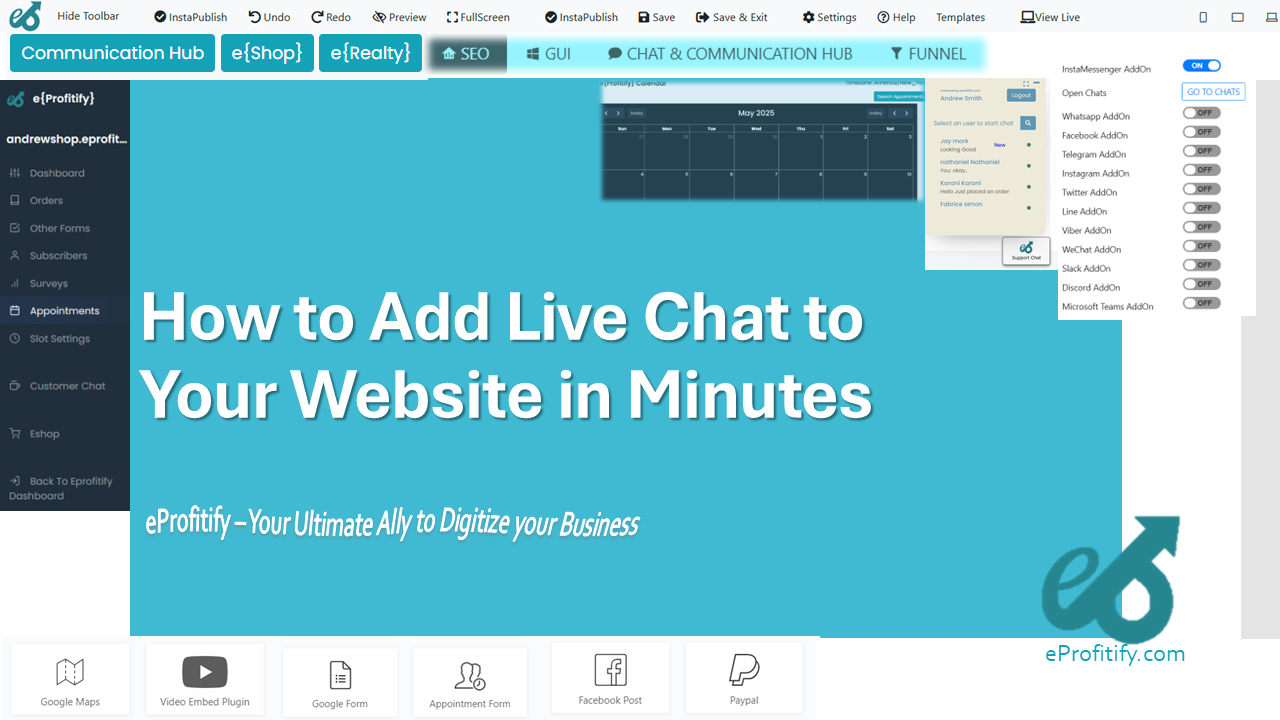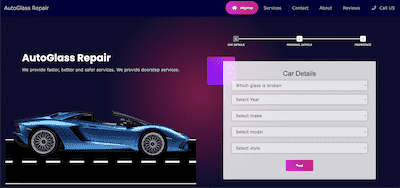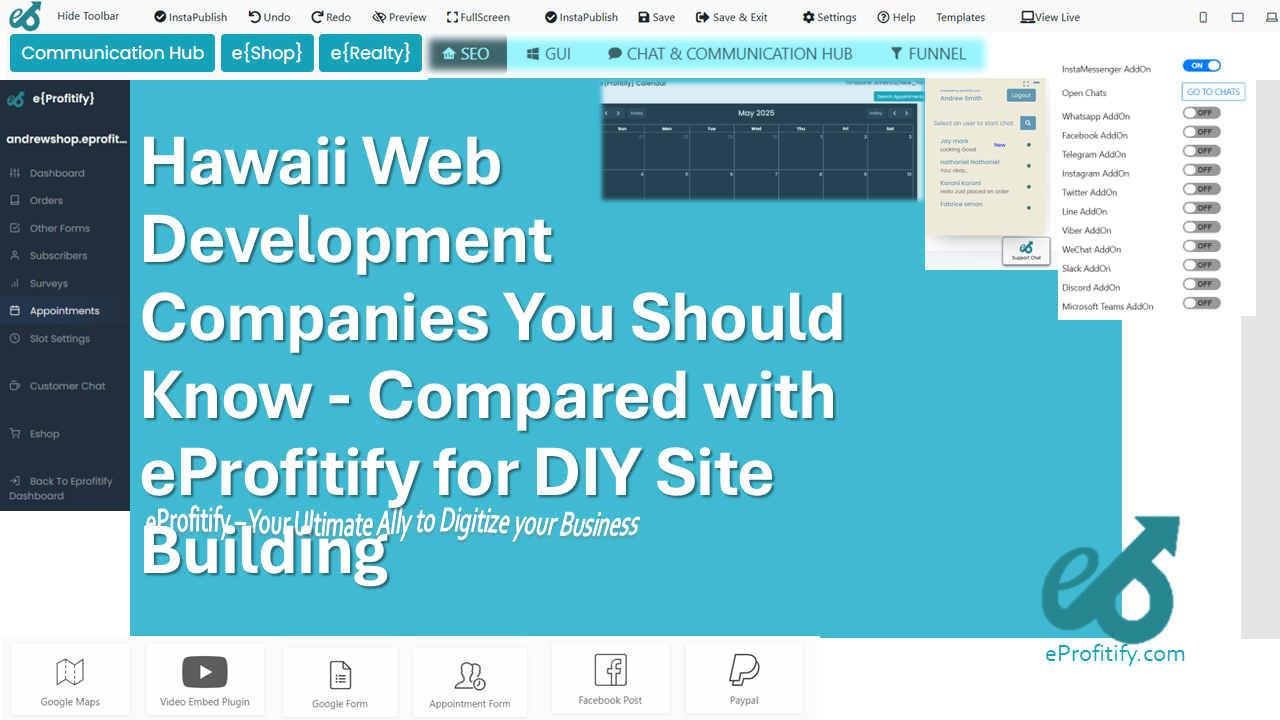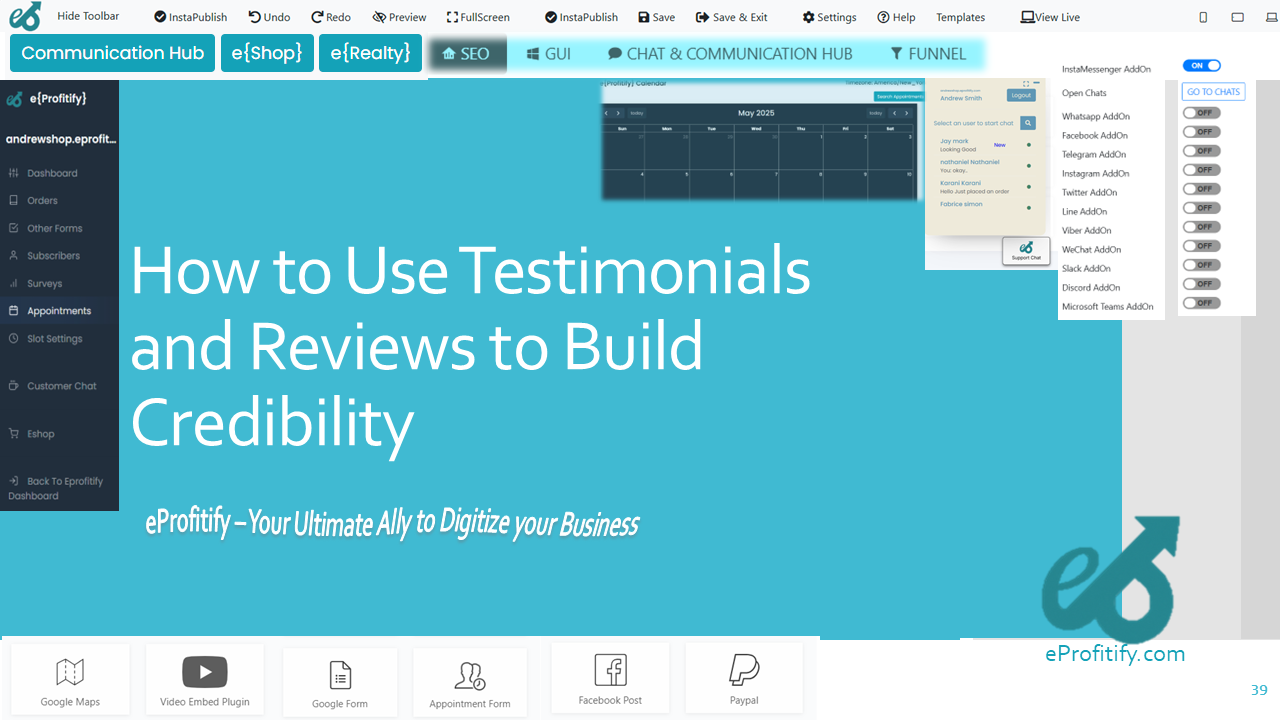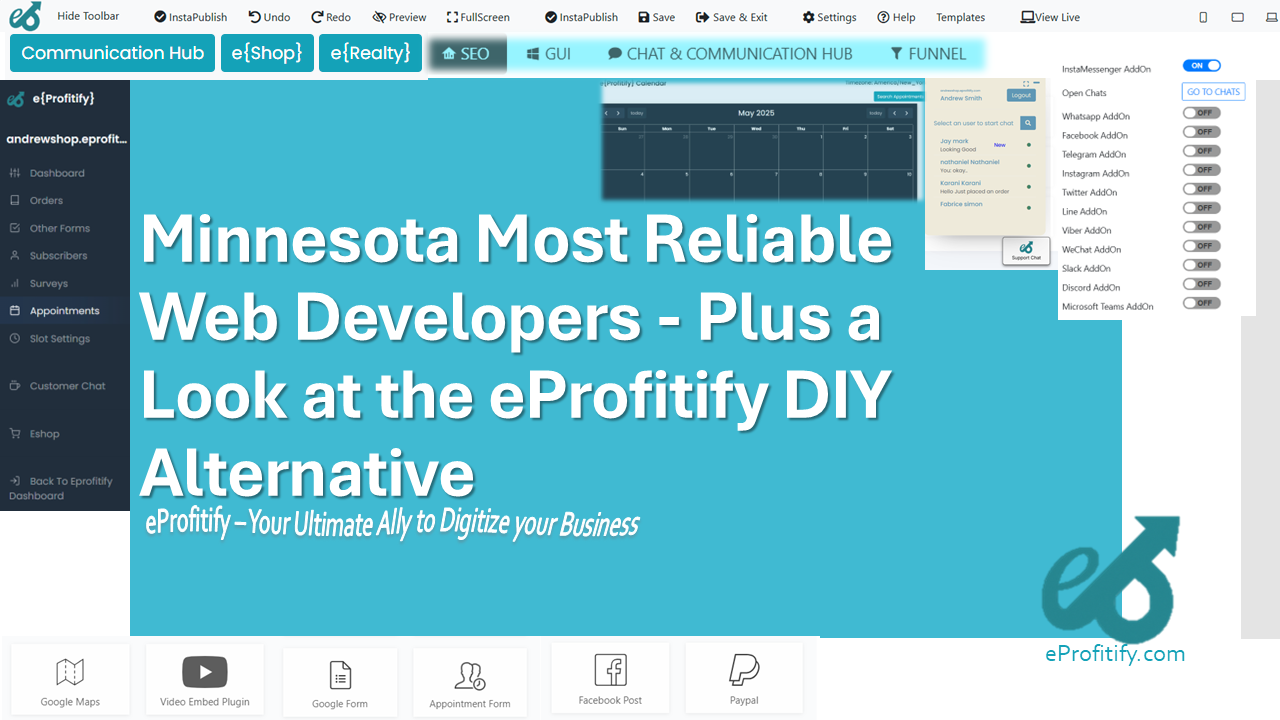How to Design a Digital Menu That Will Attract More Customers
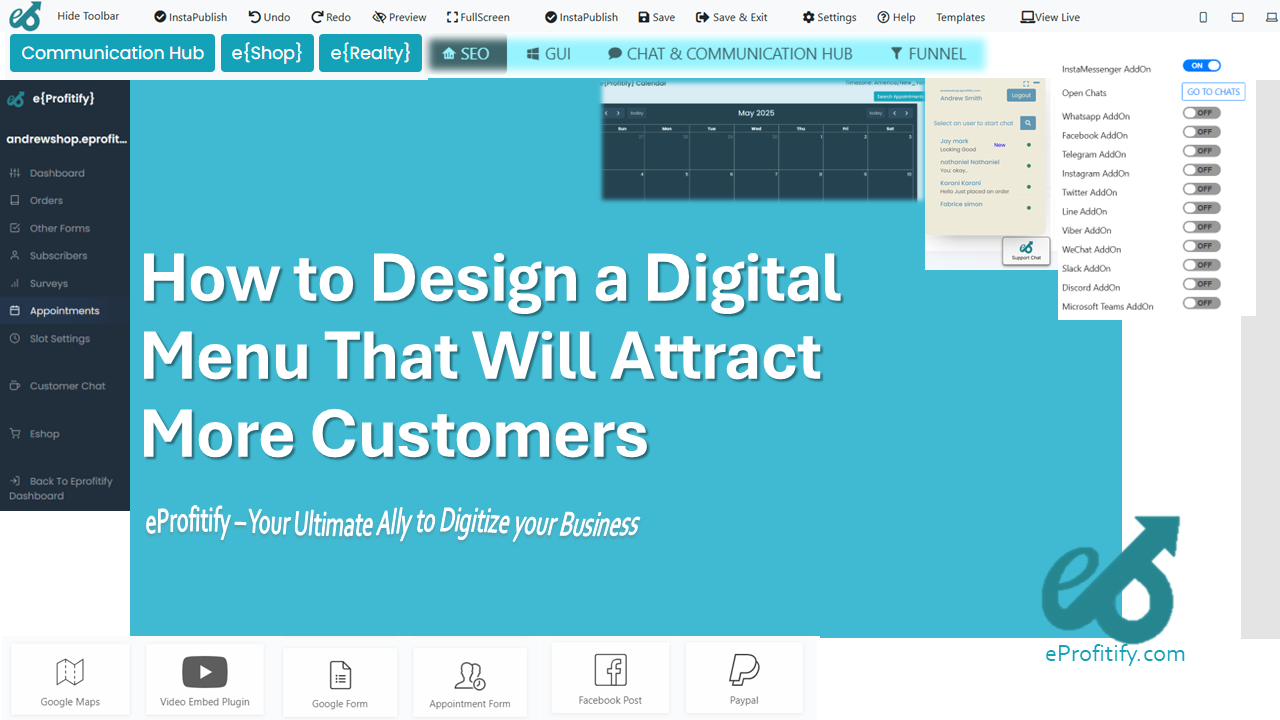
Schedule a LIVE Zoom call with an eProfitify Expert.
How to Design a Digital Menu That Will Attract More Customers
Introduction
In an era where technology shapes dining experiences, digital menus have become a cornerstone for restaurants aiming to enhance customer engagement and operational efficiency. With 60% of consumers now preferring restaurants that offer digital menus (National Restaurant Association, 2022), adopting a dynamic, visually appealing digital menu is no longer optional—it’s essential. This guide explores key strategies for designing a digital menu that captivates customers, supported by industry statistics, and introduces eProfitify, a comprehensive website management platform that streamlines this transformation.
The Shift to Digital Menus
The pandemic accelerated the adoption of contactless solutions, with 74% of restaurants implementing digital menus by 2021 (Toast QR Code Report). Beyond safety, digital menus offer real-time updates, cost savings, and actionable insights into customer behavior. According to a 2023 Deloitte study, establishments using digital menus reported a 20% increase in upselling opportunities and a 15% boost in average order value.
Key Elements of an Effective Digital Menu
1. Visual Appeal and Branding
Aesthetics matter. High-quality images can increase item sales by 30% (Nielsen Research). Use professional photography to showcase dishes, and align colors/fonts with your brand identity. For example, warm tones like red and yellow stimulate appetite, while clean layouts enhance readability.
- Tip: Highlight bestsellers or high-margin items with eye-catching banners.
2. User-Friendly Interface
A seamless user experience is critical. Ensure your menu is mobile-responsive, as 41% of diners use smartphones to order (HubSpot, 2023). Organize items into intuitive categories (e.g., “Appetizers,” “Plant-Based”) and minimize clicks—63% of users abandon menus if navigation is cumbersome (Adobe Analytics).
3. Strategic Item Placement and Descriptions
Leverage menu psychology by placing premium items in the top-right corner, where eyes naturally linger. Use persuasive descriptions: “Grass-fed beef burger with artisanal sesame bun” outperforms “Burger.” Menus with descriptors see a 27% higher conversion rate (Cornell University).
4. Integration with Technology
Link your menu to tools like inventory management systems to update item availability in real-time. Incorporate QR codes—41% of customers prefer scanning codes over physical menus (Statista, 2023). Embed social media buttons to encourage sharing, boosting visibility.
5. Personalization
Tailor recommendations using customer data. Dynamic menus that adjust based on past orders or dietary preferences (e.g., vegetarian) can increase satisfaction by 34% (Accenture). Offer loyalty program integrations to reward repeat patrons.
6. Real-Time Analytics
Track which items perform best and adjust pricing or placement accordingly. Analytics reveal peak ordering times, enabling staff optimization. Restaurants using data-driven menus reduce food waste by 22% (Food Tech Journal).
Enhancing the Digital Menu Experience with eProfitify
To implement these strategies effectively, leveraging a robust platform like eProfitify is key. As a leading website management tool, eProfitify offers tailored features that elevate digital menus into powerful sales engines:
1. Instant Messaging for Customer Engagement
eProfitify’s built-in chat allows real-time interaction. Customers can inquire about ingredients, allergens, or promotions without leaving the menu, reducing friction and building trust.
2. Appointment Management System
Integrate reservations or event bookings directly into the menu. Sync with Google Calendar to avoid overbooking and send automated reminders, reducing no-shows by up to 40%.
3. Ecommerce Integration
Enable secure ordering and payment processing. Customers can pre-order, customize meals, or purchase branded merchandise—driving revenue beyond dine-in visits. Restaurants using eProfitify’s ecommerce tools report a 25% increase in online orders.
4. CRM for Personalized Marketing
eProfitify’s CRM tracks dining habits, enabling targeted offers (e.g., “Your favorite pasta is back!”). Personalized campaigns achieve 56% higher repeat visitation rates (McKinsey).
5. Analytics Dashboard
Monitor menu performance, track customer demographics, and optimize pricing with real-time dashboards. Identify trends, such as peak demand for vegan options, and adjust inventory proactively.
6. Sustainability Features
Replace printed menus with QR codes linked to eProfitify’s platform. This reduces paper waste, aligning with the 65% of consumers who prioritize eco-friendly businesses (Forbes).
Conclusion
Designing an effective digital menu requires a blend of psychology, technology, and creativity. By prioritizing visual appeal, personalization, and seamless integration with tools like eProfitify, restaurants can boost sales, customer loyalty, and operational efficiency. In a competitive market where 78% of diners choose restaurants based on digital convenience (Grubhub, 2023), investing in a smart, analytics-driven menu powered by eProfitify’s all-in-one platform is a recipe for success. Embrace the future of dining—transform your menu today.
